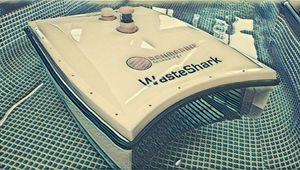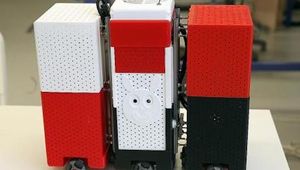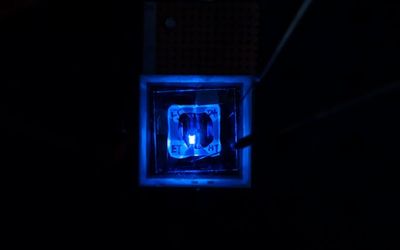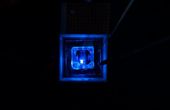Infineon Technologies TLD7002-16SYS - EVAL Board
Evaluation Platform for LITIX™ Pixel Rear LED Driver
General
| Product Type | Evaluation board |
| Compatible with | LITIX™ Pixel Rear TLD7002-16ES LED driver |
| Applications | Automotive Systems, lighting, LED |
| Key Features | CAN transceiver, Example Arduino sketch, HSLI, Fail-Safe, and GPIN Control modes, Snappable modular design |
Technical Specifications
| Size | 100 mm x 110 mm |
| Communication Modes | HSLI (UART over CAN) or TTL UART |
| Maximum Input Voltage | 28 V |
| Maximum Output Voltage | 20 V |
| Output Current Range | 5.6 mA to 76.5 mA |
| Load LEDs | 64 |
Overview
The Infineon TLD7002-16SYS EVAL Board is designed to evaluate the LITIX™ Pixel Rear TLD7002-16ES LED driver. It features a PCB with five snappable sections: a CAN transceiver, two LED driver sections, and two LED load sections. It allows users to simulate various system configurations easily. The snapped sections can be interconnected via wires or pin headers. The board supports fail-safe operation, direct drive control through GPINx, and HSLI bus control to comprehensively test the LED driver's capabilities.
Multiple Evaluation Modes for Quick Testing TLD7002-16ES LED Driver IC
This Infineon TLD7002-16SYS EVAL platform is specifically designed to assess the capabilities of the LITIX™ Pixel Rear TLD7002-16ES LED driver IC. It supports quick evaluation of the driver IC, operating in three distinct modes such as:
Direct GPIN Control: This mode controls the LED driver directly through general-purpose input/output (GPIO) pins, offering a simple control method. It allows the user to use up to 20V at the GPINx test points, thanks to the onboard current limiter resistor. In this mode, the output to the LED board works at a pre-defined duty cycle. It offers two control options, including:
PWM decoding enabled
PWM decoding disabled
HSLI bus control: High-Speed Lighting Interface (HSL) is a communication interface that can operate over a CAN physical layer (UART over CAN) or a TTL UART. It's used for high-speed data exchange with the LED driver for configuration, control, and diagnostics. This operation mode allows evaluation by connecting with an external microcontroller board.
Fail-safe operation: This feature ensures predictable behavior and safety in case of system failures or faults. In this mode, the evaluation board is set to a watchdog timer of 2 seconds. Hence, if no HSLI communication is received during this time, the board turns to Fail-safe operation.
Snappable Design with Five Detachable PCB Sections
The evaluation board offers an intelligent and flexible design to ensure easy storage and portability. It offers five sections that can be snapped and connected with wires or 2.54mm pin headers. These sections include:
One CAN Transceiver Section: The transceiver section is responsible for communication over the Controller Area Network (CAN) bus. It converts digital signals from the microcontroller to transmit over the bus and vice versa. It’s best suited for noisy environments and offers flexibility of use.
Two LED Driver Sections: The LED driver sections provide the essential power and PWM signals to the load sections. These two sections are located next to the transceiver section and provide a default output current of 20mA. The driver boards come with a pre-written over-temperature protection (OTP) but can be reconfigured when needed.
Two LED Load Sections: The LED load sections feature an array of 32 LEDs in each section. Each section connects to the driver board with a dedicated 16-pin header.
Pre-Designed Arduino UNO Demo Sketch
The evaluation platform comes with a ready-to-use Arduino sketch that allows testers to connect an Arduino UNO board via TX-RX communication pins. Arduino GPIO pins connect with the two driver boards, and the software can be run on the Arduino IDE.
Thanks to simplistic software attributes, the evaluation platform offers flexibility for a wide range of LED applications, especially in the automotive sector.
Where to find it

Mouser Electronics
Mouser Electronics is a worldwide leading authorized distributor of semiconductors and electronic components.










